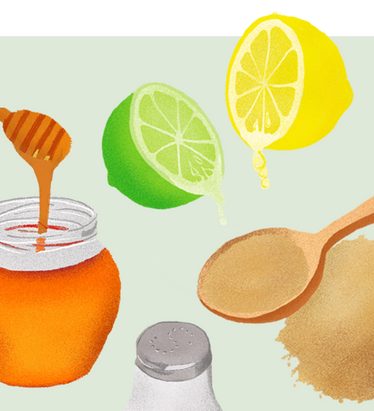
Resources
What to Taste: Teaching Kids How to Experience New Flavors
Learn which foods can help your kids broaden their palates and expand their love of food.
This is part of our series on teaching kids how to experience new flavors. Don't miss "How to Taste" for tips on how to begin the Food Adventure journey with your children.
I am always amazed when I taste something that I haven’t tasted before. As we get older, of course there are fewer and fewer options for a truly “new” flavor to blow your mind—but when it happens, it’s amazing. I remember trying a traditional mole poblano in Mexico for the first time. I’d had other iterations of the dish before, but this was different—I was struck first by the smell of it—how the scent could be so dense and full that I could almost taste it before I tasted it. Then the taste itself—it moved through so many different flavors and sensations that my mind was full of words to use to describe it, and how I felt. And while all those words were bouncing around my head, I just kept eating. I was in love with how every bite made my mind race and my tongue so happy.
I wonder all the time what it would be like to taste everything I now count as “familiar” for the first time. I don’t remember all my firsts—the first time I tried guacamole, the first time I tried pizza, the first time I tried a dried date. I wonder how many of those experiences are formative and mind-opening for kids, and for what reason. And I also wonder whether if I had had the correct vocabulary and references to explain them in language, I would remember more of them.
While we believe that experiencing new flavors can open up a world of experiences and adventures for your kids, understanding how to describe those flavors is just as important.
Starting with fundamental flavors that form the basis of our food can be incredibly helpful in building an understanding of flavor and a vocabulary around it. It’s hard to explain that something is bitter if you have no reference for what bitter is. It’s also just another opportunity for wonder: each of the five basic tastes can be experienced by the average human on at least ten different levels of intensity. That’s already at least 100,000 different flavor possibilities.
But let’s back up to the basics. What are you tasting for when you try a new food?
There are five key flavor profiles to look for:
1. Sweet
What to try: white sugar, brown sugar, honey and maple syrup.
Words to describe sweet: Syrupy, candied, sugar-coated, honeyed, sweetened, sugared, saccharine
2. Sour
What to try: the juice and flesh of almost any citrus, including lemons, limes, grapefruit, and orange
Words to describe sour: Acidic, sharp, tangy, tart, bright, zingy

3. Bitter
What to try: lemon or grapefruit pith (the white part between the flesh and the skin), or unsweetened cocoa powder
Words to describe bitter: sharp, grippy, tannic, biting

4. Salty
What to try: kosher or finishing salts, or just salty snacks like a potato chip or salted popcorn
Words to describe salty: briney, saline

5. Umami
What to try: miso soup, broths and stocks, especially mushroom or dashi broth.
Words to describe umami: Umami is basically synonymous with savory, but as the most conceptual of the basic flavor profiles, umami is often described in relation to others. For example, savory as a flavor usually denotes some combination of saltiness, spice, and earthiness.

Often times people will consider heat from spice a flavor, but it’s actually a sensation of pain on a varying spectrum of mild tingling to burn-the-house-down hot. Separating it from “taste” is interesting, because it reminds us that not all “spicy’ food is “hot”—spices, particularly ones that don’t involve a sensation of heat, can offer multitudes of flavor and aroma, and offer a particularly unique opportunity to discuss taste with your kids, without defaulting to the word “spicy.”
The idea that there is a potentially endless combination of flavors that I haven’t tried yet is as exciting to me as any one instance of a “new” flavor. But I certainly wouldn’t mind diving into that mole poblano again, just to make sure.


